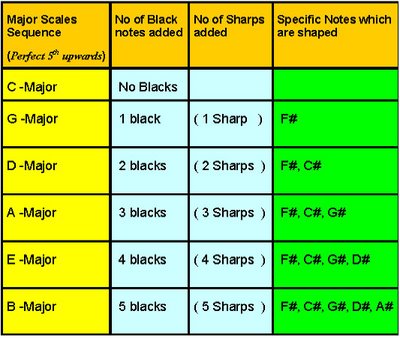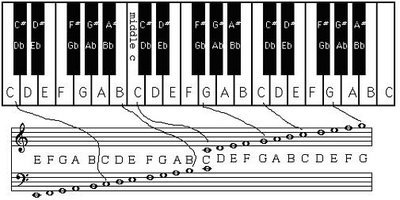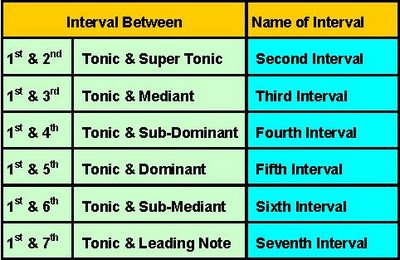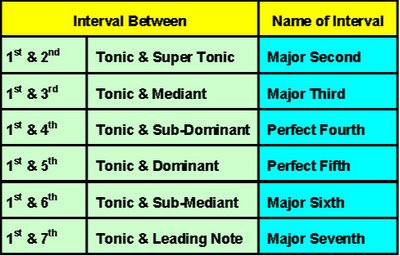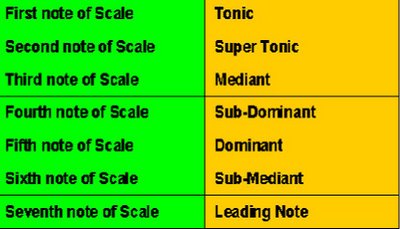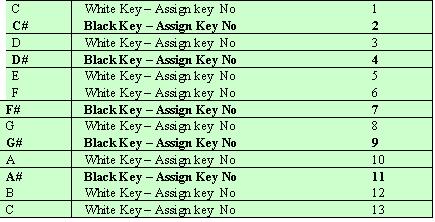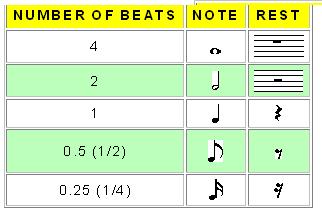Hi All,
Today just a few more points about the
abstract part of a "
Scale".
Mainly about the feeling of the various notes of the Scale.
Most of the following discussions are valid for both WCM and Carnatic scheme.
As earlier explained, each of the seven notes from Tonic to Leading note has its own distinct identity and creates some feeling in us .
This can certainly be felt while playing the scale slowly.
TONIC Tonic, the starting note certainly gives that “
I am the Basic and All “ feeling… !
i.e to say…when ever you are dwelling on this note, you feel some fulfillment.. and finishing effect…!
Most of the time, Song start with this note! Similarly most of the songs invariably end on this !
Even when you are passing on nearby notes like
Leading note or
Supertonic , you feel like either climb up or go down accordingly, to reach the
Tonic and arrive at some balance !
Dominant
The next important note is the Dominant, which is like a
fulcrum, center point, or mid point of a Scale range.
Certainly this one is the next, semi-balanced position where you can feel like staying there but at the same time not getting a finishing feeling for which you want to get back to the Tonic.
Its like while climbing stairs, you get a landing in the middle of the height and take some breathing, rest..... that kind of feeling..!
Its also true that in some songs, it will dodge you by giving a feeling as if it is the tonic !
(this kind of shifted Tonic feeling to dominant or other keys creates a lot of identification crisis in raagam for Carnatic people ! )If you sing/ play the Tonic, Dominant and the next tonic octave higher, in succession , up and down repeatedly, you can feel the entire range of the Scale you are covering.
Play and feel it !
Usually, singers before starting the song, trying to ascertain whether they are capable and comfortable to sing the range of raagam/ scale, they practice Sa-Pa-Sa.
Like sea-saw board the bottom-middle-up and back the Scale range sounds for you.
Those who have heard the IR’s devotional album, Geethaanjali, might have noted this! He starts with Sa –Pa–Sa filled with reverberating, Ohm type of sound, emanating from the instruments , and repeating for a few times and then getting into Saaaaa – Sagalamum Neeee, Paaa- Saaaaa- Sarvamum Nee, Sangeetham Nee… etc. What a Classic feeling setting a reverberations in you…!
Another small piece of information: IR always finish his orchestra while recording or otherwise, with all his players playing the Sa – Pa – Sa in a particular fashion…! Its like singing Mangalam song in (Sourashtram or Madhyamavathi raagam) in any Carnatic Kutcheri to finish the function.Thus, Tonic & Dominant are the very essential notes of the Scale.
As we earlier saw, the
Major scale hinges on Dominant with two identical parts on either side of it !
If you consider those four notes identical sequence C-D-E-F as well as G-A-B-C, it is clear that
if C is the Tonic (starting note) for the first half, G is equivalent to be the Tonic of the next half !
Coming to other notes :
Between Tonic and Dominant, Mediant ie the third note, is in mid way between them and so the name.
MediantAs we will learn later, a slight change in the Mediant will shift the scale from a Major scale to a Minor scale. Same is the effect of Sub-Mediant which is the 6th note and also can cause such effect.
Leading noteThe Leading note is so called, because it always lead to the next Octave Tonic.
I bet that, if you play the scale after coming to this 7th note and extend the note playing for a little longer and wait ….........
you will tend to reach the 8th note ie Tonic, octave higher…! To get a satisfactory ending…!
Other notesBy the way, most of us know and add the word
Sub or
Super to denote the lower/ bottom or upper/ higher position.
Like for examples, Sub-script, Super-Script, Sub-critical, Super-Critical etc. etc.Same way, The note
above Tonic is called the
Super-Tonic and the note
below the Dominant is called the
Sub-Dominant.
The 6th note is called
Sub-mediant and you can justify that if you see it from the Tonic as center.
Mediant is 3rd higher above tonic and Sub-mediant is third lower from Tonic.
(These I am putting just to remember the name from various angles! Don’t extend the arguments why not Super Dominant or Sub-Tonic etc….Spare me……!)
Ok …The essence of our discussions is,
We do ascertain to ourselves as of now, if we say Tonic, Supertonic, Mediant, Sub-dominant, Dominant, Sub-Mediant and Leading note, we mean the first, second, ….. to seventh note of a Scale…
ANY scale for that matter….!
We are very clear about that !


